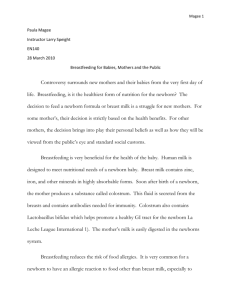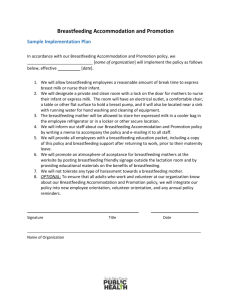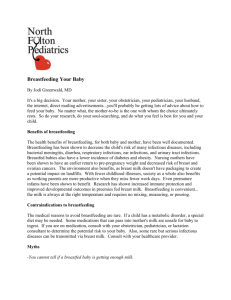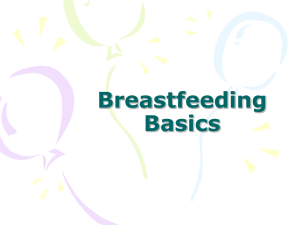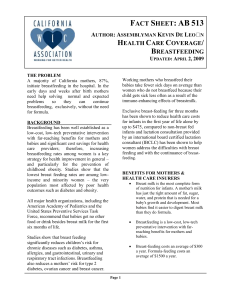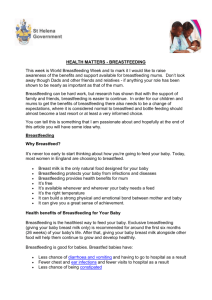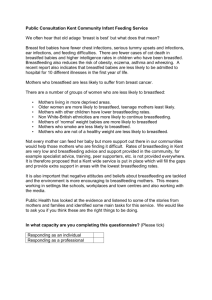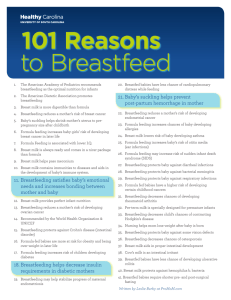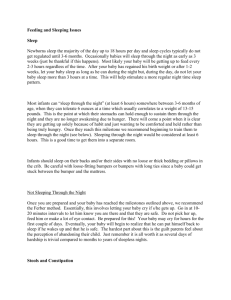Module 4, L 2 NIAS Facil Guide
advertisement
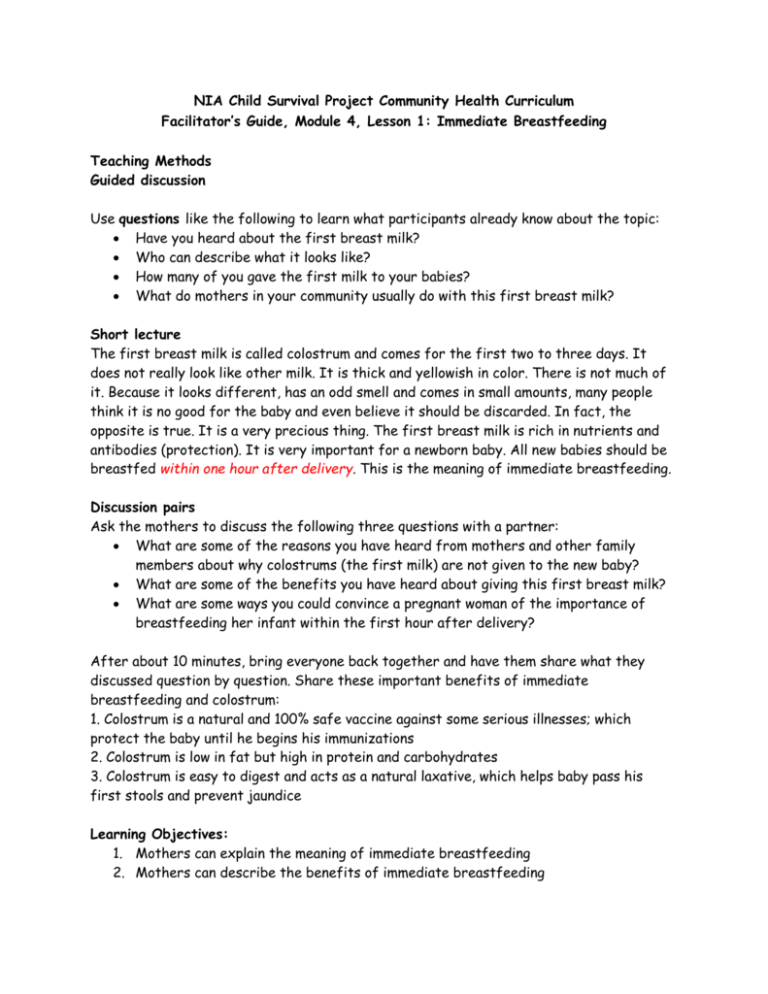
NIA Child Survival Project Community Health Curriculum Facilitator’s Guide, Module 4, Lesson 1: Immediate Breastfeeding Teaching Methods Guided discussion Use questions like the following to learn what participants already know about the topic: Have you heard about the first breast milk? Who can describe what it looks like? How many of you gave the first milk to your babies? What do mothers in your community usually do with this first breast milk? Short lecture The first breast milk is called colostrum and comes for the first two to three days. It does not really look like other milk. It is thick and yellowish in color. There is not much of it. Because it looks different, has an odd smell and comes in small amounts, many people think it is no good for the baby and even believe it should be discarded. In fact, the opposite is true. It is a very precious thing. The first breast milk is rich in nutrients and antibodies (protection). It is very important for a newborn baby. All new babies should be breastfed within one hour after delivery. This is the meaning of immediate breastfeeding. Discussion pairs Ask the mothers to discuss the following three questions with a partner: What are some of the reasons you have heard from mothers and other family members about why colostrums (the first milk) are not given to the new baby? What are some of the benefits you have heard about giving this first breast milk? What are some ways you could convince a pregnant woman of the importance of breastfeeding her infant within the first hour after delivery? After about 10 minutes, bring everyone back together and have them share what they discussed question by question. Share these important benefits of immediate breastfeeding and colostrum: 1. Colostrum is a natural and 100% safe vaccine against some serious illnesses; which protect the baby until he begins his immunizations 2. Colostrum is low in fat but high in protein and carbohydrates 3. Colostrum is easy to digest and acts as a natural laxative, which helps baby pass his first stools and prevent jaundice Learning Objectives: 1. Mothers can explain the meaning of immediate breastfeeding 2. Mothers can describe the benefits of immediate breastfeeding 3. Mothers can discuss barriers and benefits with family members and encourage other mothers to adopt immediate breastfeeding 4. Immediate breastfeeding helps to stop her bleeding after the woman delivers 5. Immediate breastfeeding often helps the breast milk to come faster so there will be enough as baby’s appetite grows 6. It helps the mother and her new baby to immediately begin forming a loving bond NOTE: Be sure to also address (correct) any myths or misinformation that is shared. Role play – There are four characters (plus a doll baby): a new mother, her husband, her mother-in-law and a midwife. There are two scenes. (1) After delivering the baby, the midwife gives him to the new mother and encourages her to try breastfeeding. She explains that it is important to breastfeed right away. The mother tries a bit and the midwife leaves, saying she has another visit to make. (2) After the midwife leaves the mother starts to complain to her family that she is too tired to breastfeed. She says she wants to sleep and feed the baby later. She says he isn’t hungry anyway because he isn’t sucking. The family members encourage her to keep trying and remind her of what the CHF and midwife said about the importance of starting breastfeeding right away. She tries again and is successful. Everyone is happy. Debrief How did the family help the new mother in the role play? Why is it important for family members to encourage a new mother? What did you see in the role play about family roles and relationships? Spiritual integration After listening to their responses, talk to participants about the role they can play in helping the men in their lives understand the importance of being involved fathers and supportive of their wives during and after pregnancy; and, also of their own role as women in educating and encouraging their sisters, daughters and other women in the family during and after pregnancy. You may want to use I Peter 3:7, Titus 2:4 and I Timothy 5:8 to illustrate the biblical basis for strong and supportive family relationships; and our responsibility to share knowledge with other family members. Husbands, in the same way be considerate as you live with your wives, and treat them with respect as the weaker partner and as heirs with you of the gracious gift of life, so that nothing will hinder your prayers, I Peter 3:7. Then they can train the younger women to love their husbands and children, Titus 2:4. If anyone does not provide for his relatives, and especially for his immediate family, he has denied the faith and is worse than an unbeliever, I Timothy 5:8. Assessment: 3-by-3 Ask mothers to work in groups of three and decide on the three most important points made in the lesson. Also, ask each group to think of three places they could talk about this issue and three people they would share the information with. After 10 minutes, go around to each group to hear their three learning points. Ask each group to share their three places and three people out loud to the rest of the mother-participants. Teaching materials Doll


